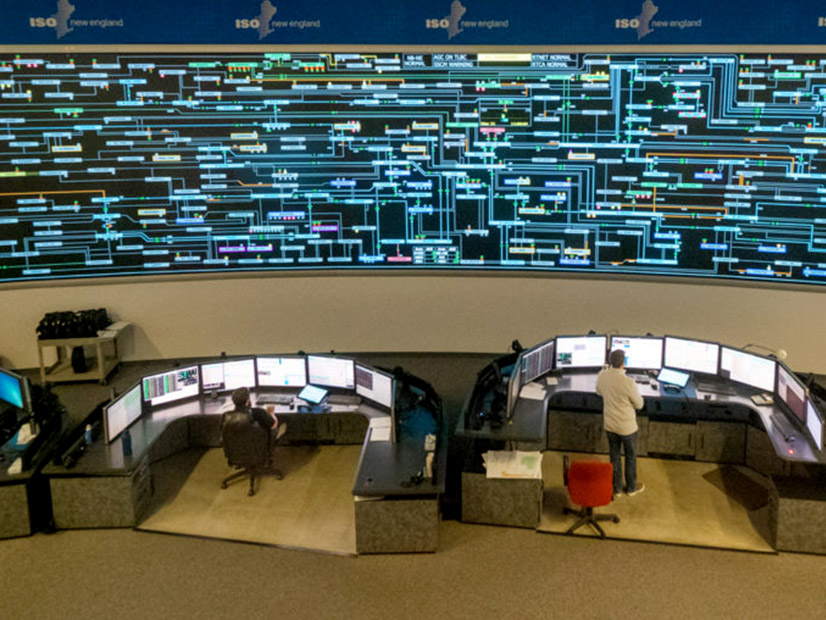The NEPOOL Participants Committee continued working group sessions on “Pathways to the Future Grid” Thursday as ISO-NE and stakeholders evaluated clean energy and carbon pricing frameworks as alternative market approaches to advance the region’s decarbonization efforts.
The RTO detailed its thoughts in a presentation that summarized a pair of memos on integrating a Forward Clean Energy Market (FCEM) with existing state policies and treatment of storage resources.
Stakeholders and the RTO are considering three potential modeling approaches for how the FCEM would interact with existing state programs:
- Clean energy is a new environmental attribute, which can earn both clean energy certificates (CECs) and renewable energy certificates (RECs) with each MWh of energy production during the delivery period.
- CECs include all environmental attributes so that a clean resource that sells CECs in the FCEM cannot also sell RECs during the delivery period.
- Discontinue existing programs and the region uses CECs to meet its environmental objectives.
ISO-NE’s Chris Geissler and Steven Otto said that the RTO proposes that stakeholders consider the first approach for modeling purposes as it avoids the “double payment” concern and allows for the continuation of existing state programs. The RTO added that none of its thinking on any of the three approaches is final.
Storage Treatment
Geissler and Otto said the “treatment of storage requires careful consideration” in either an FCEM or a net carbon pricing framework.
Storage can supply electricity during on‐peak hours after charging during off‐peak hours. Storage can also contribute to the region’s decarbonization by transferring energy production from higher emitting resources during on‐peak hours to lower‐ and non‐emitting resources during off‐peak hours.
Geissler and Otto’s presentation also addressed comments from stakeholders from the March “Pathways” meeting about storage’s role in the future grid, including whether it is appropriate for storage to receive CECs for its energy supply under an FCEM. They said storage would be compensated under an FCEM framework even when it is not awarded CECs for its energy supply. Storage also will be compensated for its marginal contributions in reducing carbon emissions under a net carbon pricing scheme when as a supplier, it is not charged for carbon emissions. But the RTO says awarding CECs to storage would lead it to be compensated at a rate exceeding its contributions.
Clean resources are expected to reduce energy offer prices under an FCEM to reflect the value of receiving CECs, as renewable resources may do under current market rules because of the value of RECs.
An FCEM increases energy market revenues for storage resources that increase clean energy production. Energy prices are also expected to be reduced when the storage resource is charging but not discharging. That means increased energy market revenues for the storage resource because it will be charged a lower price to consume electricity than under current market rules, but it is paid the same price when supplying electricity.
ISO-NE said it would present stakeholders a final report on modeled market outcomes in the first quarter of 2022.
Memos from NRG Energy, Vistra
In a memo to the PC, Vistra said that as ISO-NE contemplates how it will model the potential market designs, there needs to be a clear “product definition” for the FCEM. States and many stakeholders prefer the FCEM design as the path forward for incorporating decarbonization efforts into the wholesale markets. Vistra prefers carbon pricing, saying it can achieve decarbonization in a way “that preserves the many benefits of competitive markets.”
The company said it is open to a well-designed FCEM and believes that the procurement of a single, resource-neutral, clean energy product “is the right design for maximizing the competitive benefits that must be achieved.” Vistra said stakeholders anticipate an FCEM design that allows purchasers to buy multiple products, so ISO-NE’s modeling must account for proposed market design details that most closely align with stakeholders’ actual market design preferences.
In another memo on behalf of NRG Energy and other stakeholders, Pete Fuller and David O’Connor said that the RTO’s three suggested FCEM approaches emphasize modeling existing REC programs, “which is likely to be complex and appears to be somewhat outside the scope of the Pathways modeling effort.” They recommend a simpler approach that only assesses the impact of revenues from REC markets on Integrated Clean Capacity Market modeled results. One scenario assumes that resources producing FCEM/ICCM credits do not receive any revenues from REC trading. In the other scenario, the assumption of a market price like $300/MWh for solar RECs would reduce the offered prices of eligible resources in FCEM/ICCM.



